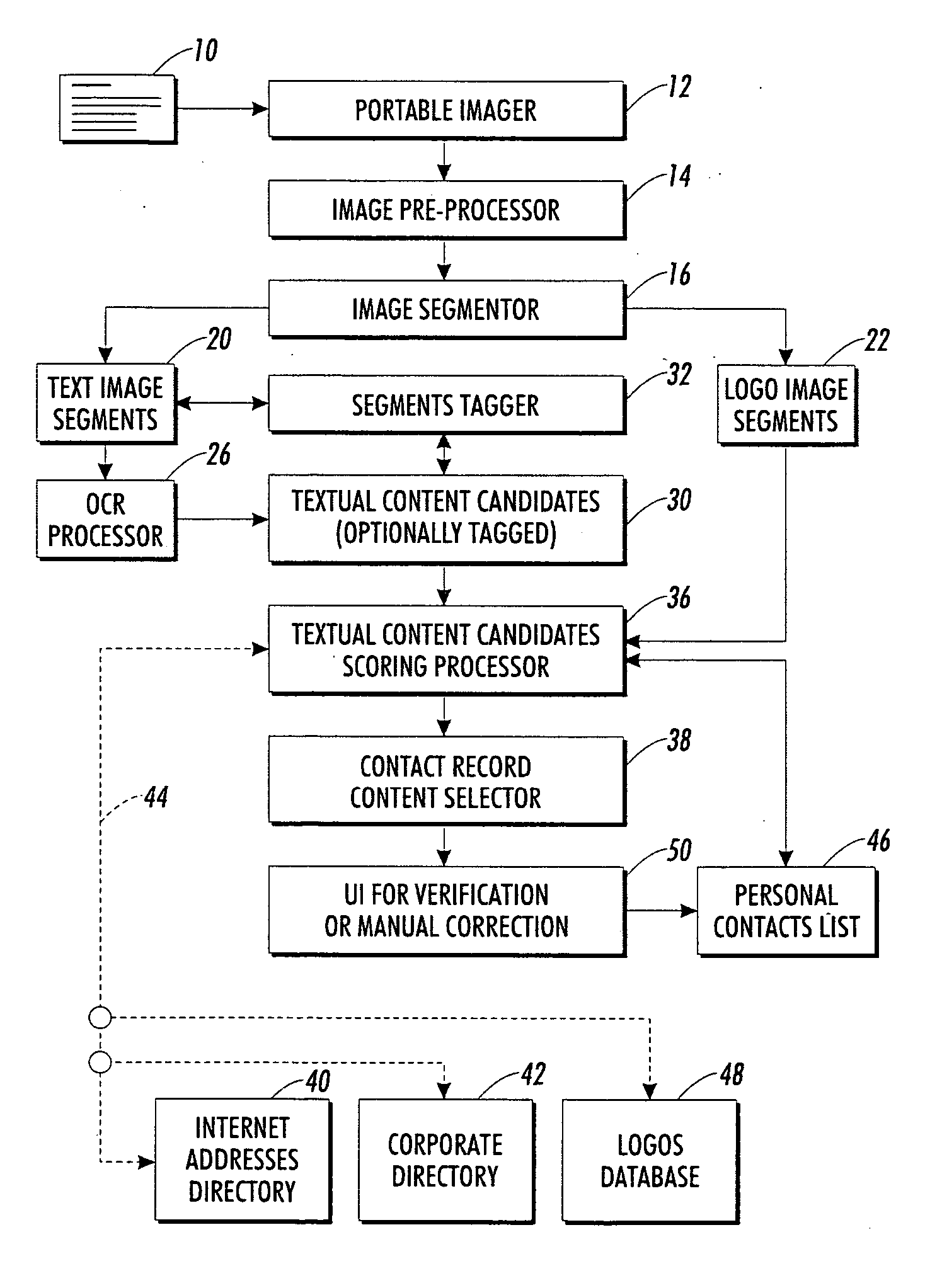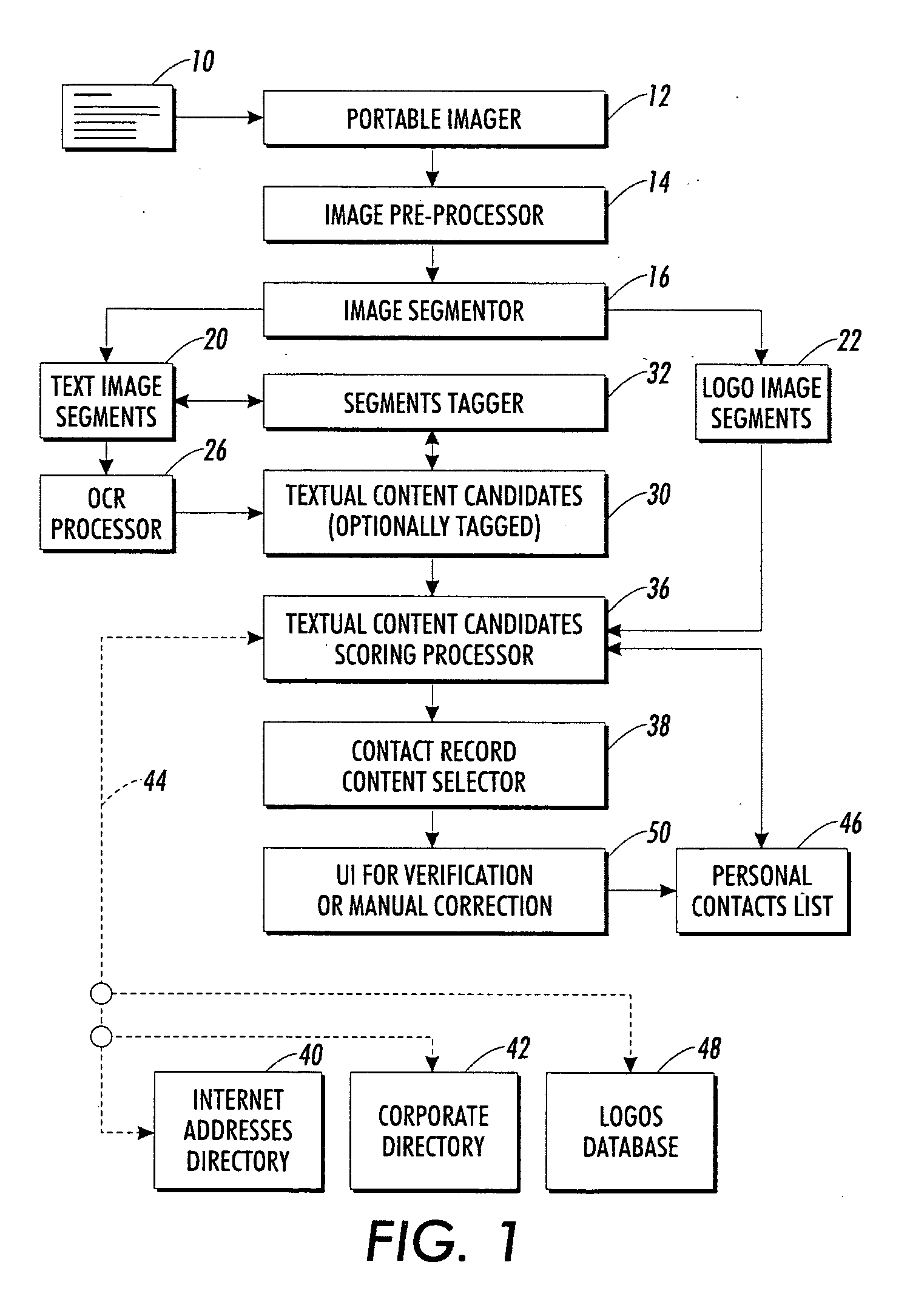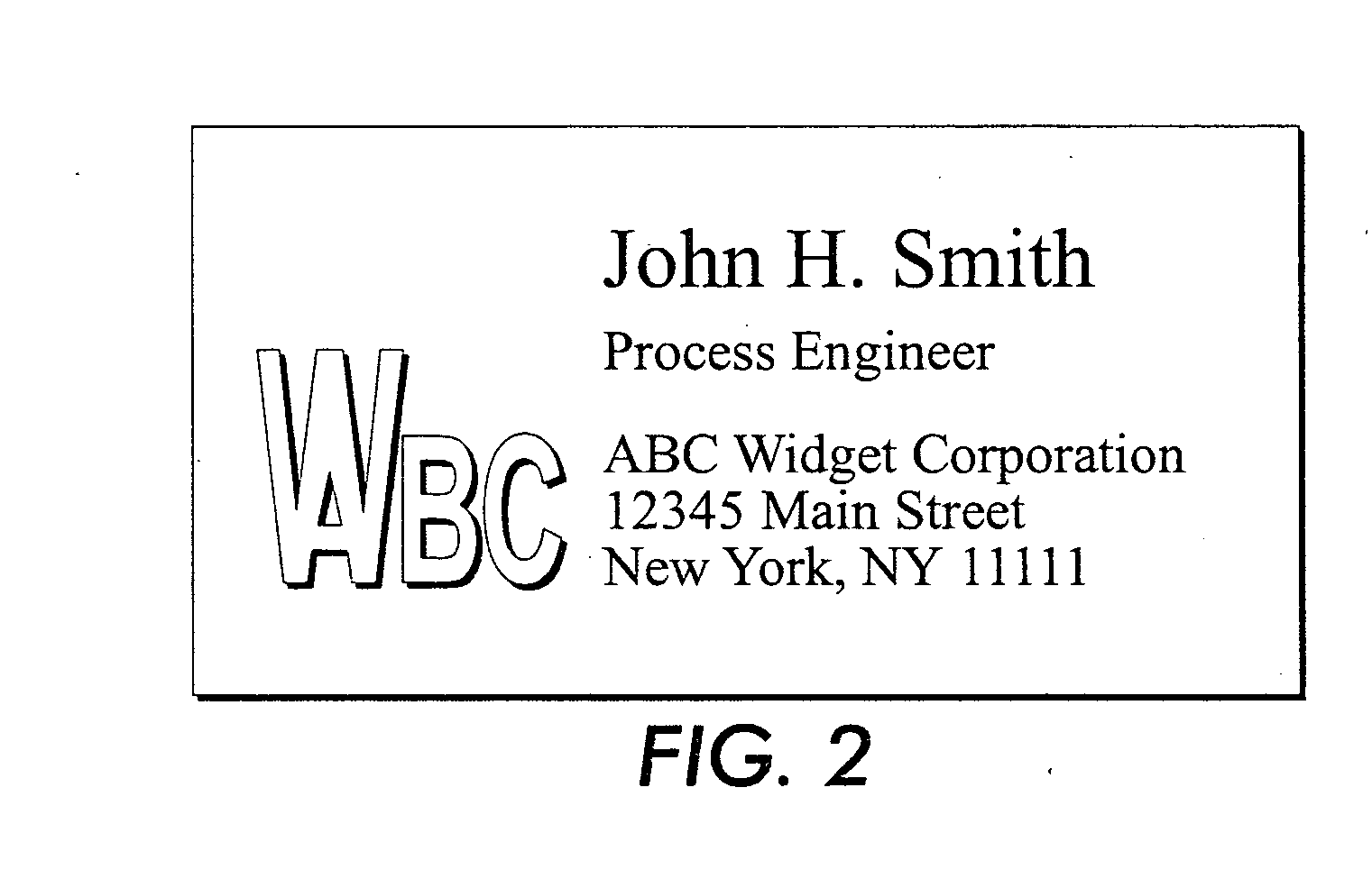Personal information retrieval using knowledge bases for optical character recognition correction
a technology of personal information and knowledge bases, applied in the field of information arts, can solve the problems of difficult to effectively apply ocr to business card images acquired using digital cameras, textual content is not immediately accessible, and the resolution of the built-in digital cameras of cellular telephones is typically low
- Summary
- Abstract
- Description
- Claims
- Application Information
AI Technical Summary
Benefits of technology
Problems solved by technology
Method used
Image
Examples
Embodiment Construction
[0021] With reference to FIG. 1, a business or professional person or other person receives a business card 10, which he or she wants to add to a contacts database, contact list, or so forth. Accordingly, the person acquires an image of the business card 10 using a portable imager 12, which may for example be a built-in camera of a cellular telephone, a portable digital camera, a handheld document scanner, or so forth. Using the built-in camera of a cellular telephone as the portable imager 12 has advantages in that the cellular telephone is a portable device commonly carried by business and professional persons into meetings and other interpersonal transactional settings. Using the built-in camera of a cellular telephone or a point-and-shoot-type digital camera advantageously allows the business card image to be acquired at the click of a shutter button. However, it is also contemplated to acquire the image using a portable scanner or other scan-based portable imager.
[0022] In the...
PUM
 Login to View More
Login to View More Abstract
Description
Claims
Application Information
 Login to View More
Login to View More - R&D
- Intellectual Property
- Life Sciences
- Materials
- Tech Scout
- Unparalleled Data Quality
- Higher Quality Content
- 60% Fewer Hallucinations
Browse by: Latest US Patents, China's latest patents, Technical Efficacy Thesaurus, Application Domain, Technology Topic, Popular Technical Reports.
© 2025 PatSnap. All rights reserved.Legal|Privacy policy|Modern Slavery Act Transparency Statement|Sitemap|About US| Contact US: help@patsnap.com



